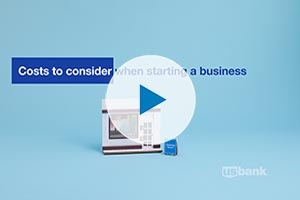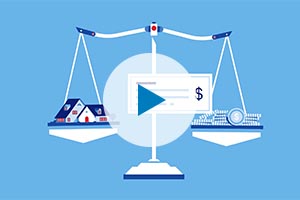A small telecommunications logistics company wanted to acquire a new division which would more than double their size. Here’s how they were able to do it, thanks to asset-based financing.
By Beth Limpert, Senior Vice President, U.S. Bank
In the fall of 2008, the financial industry sat on the cusp of a major economic downturn. It wasn’t the best time to engage in large-scale negotiations on mergers or acquisitions, yet that opportunity still appeared for one midsize telecommunications logistics company in Minnesota.
KGP Telecommunications, Inc., today KGPCo, aimed big and looked to acquire a division of a major telecom company. The division was greater than the company’s size, heavily focused on assets, and no longer a strategic fit for its parent company. How could this midsize, family-owned telecommunications company finance a major asset-intensive acquisition during the worst part of the economic downturn?
First challenge: Finding a willing lender
Many banks weren’t willing to lend in the latter part of 2008, for obvious reasons. Lenders were pulling back from new business due to issues within their existing portfolios, which meant that KGPCo initially had difficulty finding the right lender. Beth Limpert, U.S. Bank senior vice president of Asset-Based Finance, who served as the portfolio manager for the KGPCo account, described the major hurdles for the company.
The first major challenge was to find a bank that would lend, finance the acquisition and take time to understand both the existing business and the acquisition target, a division of a bigger company,” Limpert said. “The target company also didn’t have stand-alone audited statements, which made things more challenging from a due diligence perspective.”
KGPCo found one major bank that could help them to pursue their goals: U.S. Bank.
Second challenge: Evolving with a changing industry
KGPCo was founded in 1973 by the Putrah family, who still owns it today. The company built its business as a distributor of low-tech parts to major telecom companies. The telecommunications industry shifted away from landlines in the past decade, and KGPCo needed to diversify their portfolio. Phone lines alone weren’t enough. They needed to aim broader.
Limpert shares how they worked with U.S. Bank to expand their product lines through acquisitions and internal growth.
“The telecom industry was changing very rapidly,” Limpert said. “People were moving away from landlines, and their core business still served that market. The company bolstered its management team and brought in a new CFO. We worked together to evaluate growth opportunities for the company, allowing us to expand our credit facility.”
The solution: Strategic asset-based lending for an asset-rich purchase
With a focus that lends well to asset-rich companies, we were able to extend a credit facility to KGPCo. This allowed them to complete their initial acquisition as well as some follow-on acquisitions, expand their borrowing base, and boost their working capital in line with growth.
“We added inventory to the borrowing base and hired a third-party appraiser during the process,” Limpert added. “With the help of the appraiser, we structured a borrowing base around SKU turnover categories. This encouraged the client to focus on inventory turnovers, which helped them manage their stock more effectively and provided a solid borrowing base structure for the Bank.”
Today, KGPCo has nearly six times the revenue of 2008. While the acquisition itself was part of that revenue spike, most has come from organic growth financed through their credit line. They have no debt, other than their revolving loan.
They’ve also been able to expand their relationship with U.S. Bank through treasury management, payments services, equipment finance, commercial letters of credit and interest rate swaps. The relationship has blossomed significantly in the past decade.
Most importantly, they were not only able to withstand the financial downturn of 2008, but they thrived.
For Limpert, the KGPCo relationship remains a compelling example for the U.S. Bank philosophy on asset-based financing.
“The fact that they were trying to buy this division in a severe downturn speaks volumes,” Limpert said. “Our asset-based financing product lends itself very well to company with a lot of assets. We can offer a lot of flexibility and credit capacity, since we focus less on borrower performance factors and more on borrower liquidity, generated by assets.”
“They still call me to discuss their growth plans and ideas,” Limpert added. “I’m always happy to take those calls. When other banks come looking for their business, KGPCo tells them U.S. Bank is their bank, and refers them to me.”
Are you considering an asset-heavy acquisition, or looking to maximize your borrowing capacity? Contact a U.S. Bank asset-based lending specialist for more information.
Beth Limpert is a portfolio team leader for the asset-based finance team at U.S. Bank, responsible for the Upper Midwest region. She has 35 years of experience working with middle market companies.
U.S. Bank is not affiliated with KGPCo.





























































































